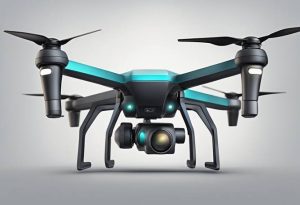
Eine neue Studie liefert den bisher stärksten Beweis dafür, dass Dinosaurier in ihrer Kindheit verletzt wurden und sich zum Zeitpunkt des Einschlags des Asteroiden nicht im Niedergang befanden.
Eine Landmark-Studie ergab, dass Dinosaurier die Welt beherrschten, bis ein tödlicher Asteroid die Erde traf, was vor etwa 66 Millionen Jahren zu ihrem Massensterben führte.
Die Ergebnisse wurden in der Zeitschrift veröffentlicht Wissenschaft schreitet voran Am 7. Dezember lieferte er den bisher stärksten Beweis dafür, dass Dinosaurier in ihrer Blütezeit geknipst wurden. Als der Asteroid Chicxulub einschlug, waren die Dinosaurier nicht im Niedergang begriffen.
Wissenschaftler haben lange darüber diskutiert, warum Nicht-Vogel-Dinosaurier, einschließlich Tyrannosaurus rex und Triceratops, ausgestorben sind – während andere Säugetiere und Arten wie Schildkröten und Krokodile überlebt haben.
„Dinosaurier waren stark, mit stabilen Ökosystemen, bis plötzlich ein Asteroid sie tötete…“ – Professor Steve Brusatte
Unter der Leitung eines internationalen Teams von Paläontologen und Ökologen analysierte die Studie 1.600 Fossilienfunde aus Nordamerika. Die Forscher modellierten die Nahrungsketten und ökologischen Lebensräume von Land- und Süßwassertieren über die letzten Millionen Jahre[{“ attribute=““>Cretaceous, and the first few million years of the Paleogene period, after the asteroid hit.
For some time paleontologists have known that many small mammals lived alongside the dinosaurs. However, this research reveals that these mammals were diversifying their diets, adapting to their environments, and becoming more important components of ecosystems as the Cretaceous unfolded. Meanwhile, the dinosaurs were entrenched in stable niches to which they were supremely well adapted.
Mammals didn’t just take advantage of the dinosaurs dying, experts say. They were creating their own advantages through diversifying – by occupying new ecological niches, evolving more varied diets and behaviors, and enduring small shifts in climate, by rapidly adapting. These behaviors probably helped them to survive, as they were better able than the dinosaurs to cope with the radical and abrupt destruction caused by the asteroid.

Triceratops prorsus munching on cycads disturbs primitive cousins of placental (left) and marsupial (right) mammals in the underbrush- while a softshell turtle climbs up on a log, unaware that its freshwater ecology will shelter it from the impending doom from space. Credit: Henry Sharpe
First author, Jorge García-Girón, Geography Research Unit, University of Oulu, Finland and Department of Biodiversity and Environmental Management, University of León, Spain, said: “Our study provides a compelling picture of the ecological structure, food webs, and niches of the last dinosaur-dominated ecosystems of the Cretaceous period and the first mammal-dominated ecosystems after the asteroid hit. This helps us to understand one of the age-old mysteries of paleontology: why all the non-bird dinosaurs died, but birds and mammals endured.”
Co-lead author, Alfio Alessandro Chiarenza, Department of Ecology and Animal Biology, University of Vigo, Spain, said: “It seems that the stable ecology of the last dinosaurs actually hindered their survival in the wake of the asteroid impact, which abruptly changed the ecological rules of the time. Conversely, some birds, mammals, crocodilians, and turtles had previously been better adapted to unstable and rapid shifts in their environments, which might have made them better able to survive when things suddenly went bad when the asteroid hit.”
Senior author, Professor Steve Brusatte, Personal Chair of Palaeontology and Evolution, School of GeoSciences, University of Edinburgh, said: “Dinosaurs were going strong, with stable ecosystems, right until the asteroid suddenly killed them off. Meanwhile, mammals were diversifying their diets, ecologies, and behaviors while dinosaurs were still alive. So it wasn’t simply that mammals took advantage of the dinosaurs dying, but they were making their own advantages, which ecologically preadapted them to survive the extinction and move into niches left vacant by the dead dinosaurs.”
Reference: “Shifts in food webs and niche stability shaped survivorship and extinction at the end-Cretaceous” by Jorge García-Girón, Alfio Alessandro Chiarenza, Janne Alahuhta, David G. DeMar, Jani Heino, Philip D. Mannion, Thomas E. Williamson, Gregory P. Wilson Mantilla and Stephen L. Brusatte, 7 December 2022, Science Advances.
DOI: 10.1126/sciadv.add5040
The research is published in the journal Science Advances. It was funded by National Science Foundation (USA), Academy of Finland, European Union Next Generation European Research Council (ERC) Starting Grant, European Union’s Horizon 2020 Research and Innovation Programme, Juan de la Cierva Formación 2020 Fellowship funded by the Ministry of Science and Innovation from the European Union Next Generation.









